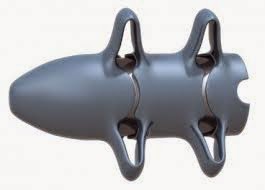Aperius PercLID
 From January 2007 to February 2008, 152 consecutive patients with neurogenic claudication were treated with Aperius PercLID system.
From January 2007 to February 2008, 152 consecutive patients with neurogenic claudication were treated with Aperius PercLID system.
Under a local anesthesia, a 1.5 cm skin incision was performed. Trocars for interspinous space distraction were positioned using fluoroscopy guidance. A suitable size Aperius was positioned and released in the interspinous space with a totally percutaneous technique. In 145 patients 1 level was treated, whereas 6 patients received 2 level treatments, and 1 patient received 3 level treatments. The levels treated were L4-L5 in 125 patients (78.2%), L3-L4 level in 26 patients (16.3%), L2-L3 level in 5 patients (3.1%), L5-S1 level in 3 patients (1.8%), and L1-L2 level in 1 patient (0.6%). RESULTS: The surgical time ranged from 8 to 14 minutes for 1 single level. No adverse events were noted. In 1 case (0.6%), Aperius was not implanted because of hypertrophic facet joints that have hindered the correct insertion of the device; we observed only 2 cases of therapeutic failure (1.3%). There was a significant improvement in the Visual Analog Scale and Zurich Claudication Questionnaire scores for low-back and leg pain and for neurogenic claudication.
These results indicate that Aperius PercLID system offers an easy, safe, and effective treatment for patients with lumbar degenerative stenosis. Thus, this device system treatment represents a valid alternative to the traditional surgical techniques 1).